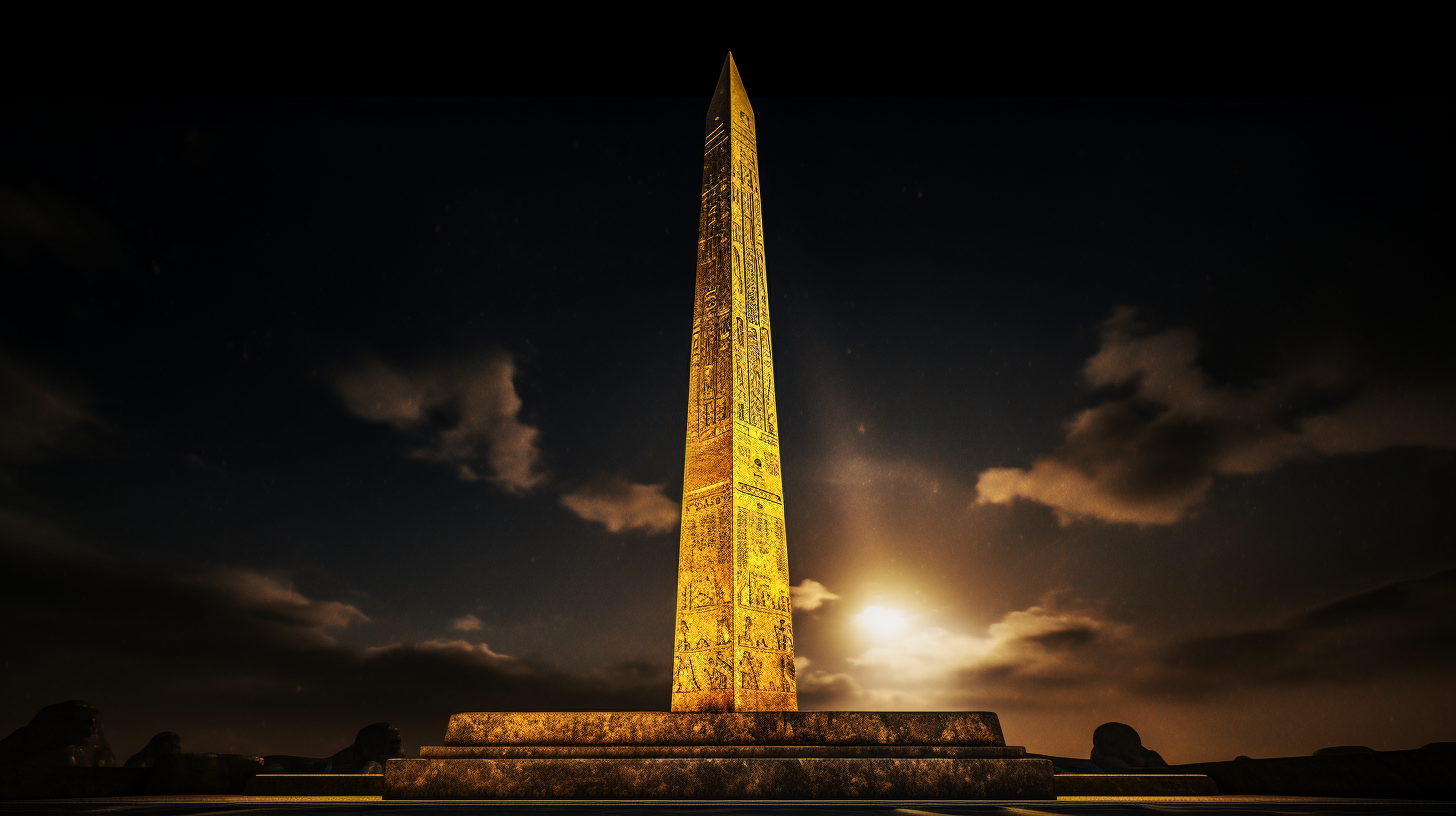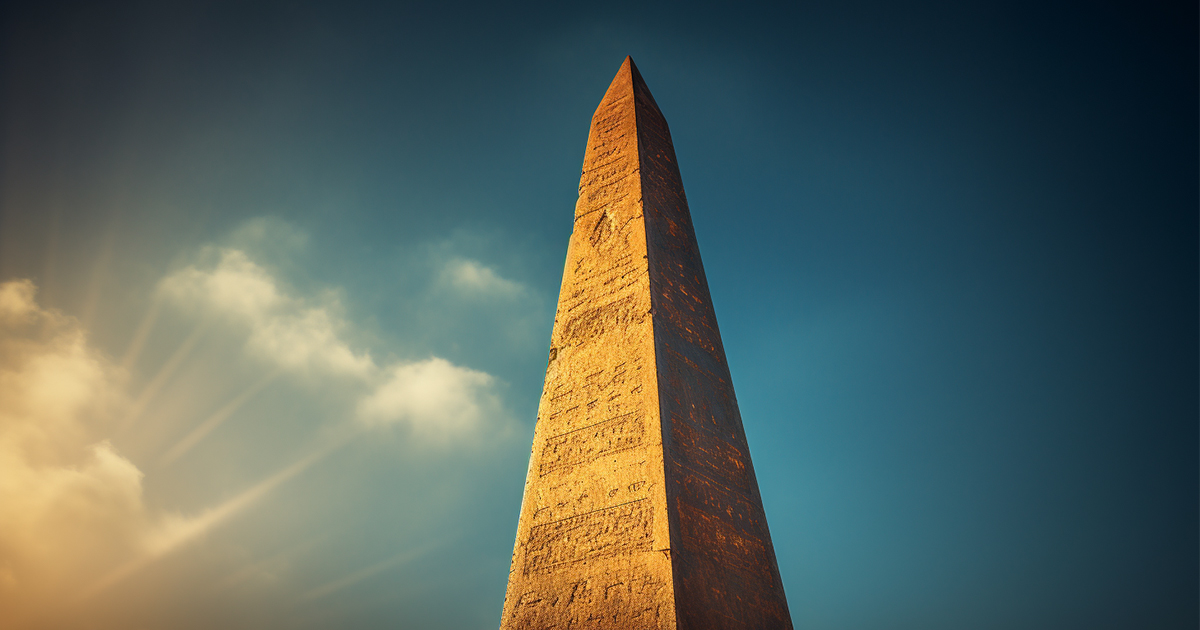Considering past civilizations often brings to mind grand architectural feats like the Egyptian pyramids or the Great Wall of China. However, hidden among these famous marvels lies a mysterious and captivating structure known as obelisks.
These impressive four-sided monuments have piqued the interest of historians and, more recently, theorists who suggest a fascinating connection to advanced technology. Let’s embark on a journey into the world of ancient obelisks and reveal the captivating mysteries they hold.
The Timeless Impact of Obelisks Across Eras
Standing tall like vigilant guardians amidst the Egyptian landscape, obelisks have fascinated minds for generations. The world’s oldest surviving obelisk dates back to around 1900 B.C., proudly located just 20 miles northeast of the renowned Giza Pyramid Complex.
The origin of the term “obelisk” can be traced back to the Greek word “obeliskos,” meaning a “pointed pillar.” These towering structures are characterized by their slim, tapering design that culminates in a pyramidion at the top.

In ancient Egypt, hieroglyphs adorned the four sides of these colossal stones, often preserving historical accounts of battles, significant events, or the region’s myths. While obelisks emerged centuries after the standing stones of Carnac, Brittany, they shared a crucial similarity: both were monoliths carved from a single block of red granite.
The Fascination of Quartz Crystal Energies
What sets Egyptian obelisks apart is the incorporation of red granite infused with tiny quartz crystals. This unique composition is believed to impart a special energy to the obelisks.
Ancient societies acknowledged this energetic phenomenon, seeing obelisks as living entities akin to the even older standing stones. This connection between ancient inhabitants and these towering structures raises intriguing questions about their purpose.
Ancestral Connections to the Divine Realm
Advocates of ancient astronaut theory suggest that the Egyptians understood the potential of obelisks in establishing a deep connection with the divine. The upward-reaching form of the obelisk, reminiscent of a cathedral, represented a celestial link. Atop an obelisk rested a significant stone – the capstone, crafted as a pyramid and sculpted from finely polished granite adorned with hieroglyphs.
Of particular note, this glistening capstone, shining in pure gold, created a mesmerizing display when illuminated by sunlight, visible from afar. This capstone acted as the conduit through which mortals communicated with deities.
Egypt’s Reflection of Cosmic Harmony
Historical accounts speak of Egypt’s connection to “heavenly energies,” reflecting celestial splendor on Earth. This concept, often summarized as “as above, so below,” hints at a link between the heavenly and earthly realms. While conventional scholars interpret this metaphorically, proponents of ancient astronaut theory propose an alternative view.
Hypothesis of an Energy Grid and Obelisks
According to these theorists, obelisks were not just symbols but essential components of an extensive wireless energy grid that also encompassed the pyramids. Drawing parallels with modern technology, they liken this energy transfer to wireless device charging. In this envisioned scenario, extraterrestrial beings may have recharged their vessels using these obelisks and standing stones.
Furthermore, the pyramids likely served a similar function, hinting at the presence of highly advanced technologies beyond our current understanding.
The Power of Quartz Crystal Dynamics
The significant concentration of quartz crystal within the walls of the Great Pyramid further supports this idea. Together with other ancient structures like obelisks and pyramids, it is speculated that a global network for wireless energy transmission could have been established.
Strategically placing these obelisks and standing stones worldwide, in conjunction with the pyramids, could have facilitated the transmission and reception of energies.
An International Network of Energy Dissemination
These ancient standing stones may have operated as antennas and energy hubs, potentially enabling a worldwide power distribution system. Vehicles, submarines, and various electrical devices might have drawn power directly from the atmosphere, harnessed and distributed by the pyramids and obelisks.
Explore this Video for Further Insights
To Summarize
In conclusion, the enigmatic obelisks of ancient Egypt offer a fascinating glimpse into a realm where advanced technology intersects with celestial connections. While traditional interpretations view them symbolically in religious and cultural contexts, the speculations of ancient astronaut enthusiasts prompt us to imagine a world where these monumental structures played a pivotal role in sustaining a civilization that remains partially shrouded in mystery.
Whether seen as symbolic icons or technologically advanced entities, the enduring charm of these monumental obelisks and the mysteries they safeguard remains unquestionable.
